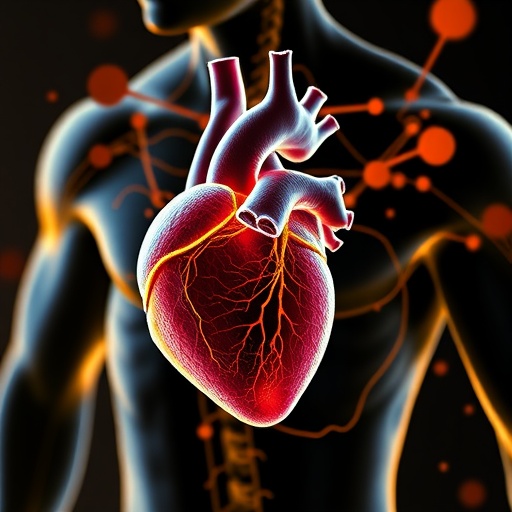In a revealing study that could reshape our understanding of agricultural practices and environmental policy in Europe, researchers have conducted an extensive scenario analysis of nitrogen surplus typologies across the continent. The work, led by notable scientists including Batool, Sarrazin, and Zhang, uncovers critical insights into how current and proposed nitrogen management strategies may not align with the ambitious goals set forth by the European Union’s Green Deal for 2030. This exploration is particularly timely, as the EU faces increasing scrutiny over its environmental policies amidst a backdrop of growing climate challenges.
Nitrogen, a crucial nutrient for crop production, plays a dual role in farming. It can significantly enhance yields when applied appropriately but can also lead to severe environmental problems when overly utilized. The researchers focused on understanding the different types of nitrogen surplus that currently exist in Europe, which offers key indicators for the environmental efficiency of agricultural systems. They argue that simply aiming for a 20% reduction in fertilizer use may not be sufficient to meet the environmental targets set by the EU, particularly in light of the diverse agronomic contexts across different regions.
One of the core findings of the study emphasizes that existing nitrogen surplus typologies vary greatly from one region to another. These disparities point to the necessity of tailored approaches in policy and agronomy. For instance, northern European countries may exhibit different nitrogen management challenges compared to southern nations, signaling that a one-size-fits-all fertilizer reduction strategy is likely to fall short. Personalized strategies that consider local agricultural practices and ecological impacts are essential for achieving the desired outcomes of the Green Deal.
The researchers utilized advanced modeling techniques to project potential outcomes based on different reduction scenarios. Among these, the 20% fertilizer reduction was predicated on current policies and agriculture guidelines. However, their results suggested that relying solely on this numerical target could lead to significant gaps in achieving nitrogen balance within ecosystems. As such, the paper urges for a reconsideration of current targets and the creation of more robust frameworks that can accommodate the complexities of nitrogen management.
Another striking aspect of their findings is the considerable economic implications of nitrogen management decisions. With the agricultural sector being a major contributor to the overall economy in many European countries, any policy that significantly hampers agricultural productivity can lead to heightened tensions between economic sustainability and environmental stewardship. This research highlights the delicate balance between achieving food security and protecting environmental resources, emphasizing that policymakers need to carefully weigh their decisions.
Additionally, the study identifies how agricultural innovation could play a pivotal role in addressing nitrogen surplus issues. As science advances, new technologies allow for more precise applications of fertilizers, which can mitigate the risks associated with over-application. The authors call for an increased investment in research and development aimed at innovative agricultural practices that support nitrogen efficiency. These solutions could provide pathways to align agricultural productivity with environmental goals.
The scenarios evaluated also indicate a potential need for enhanced collaboration among stakeholders, including farmers, researchers, and policymakers. Involving farmers in the decision-making processes may yield practical insights that could lead to more effective policies and practices. In this context, knowledge transfer becomes critical; farmers often possess invaluable tacit knowledge that can inform sustainable practices in real-time.
Moreover, the societal dimensions of nitrogen management cannot be ignored. Public awareness campaigns aimed at educating consumers about the implications of nitrogen surplus and promoting sustainable agricultural practices could foster a more environmentally conscious society. The researchers advocate for holistic approaches that not only focus on agricultural outputs but also on creating informed consumers who understand the ecological implications of their food choices.
In conclusion, the study underscores a significant challenge for European agricultural policy: achieving ambitious environmental targets amidst complex agricultural realities. The researchers argue that while efforts to reduce nitrogen fertilizer use are commendable, they must be comprehensive and inclusive, considering regional differences and socio-economic factors. A solely numerical target may serve as an inadequate response to the multifaceted nature of nitrogen surplus in Europe.
By embracing a broader perspective on nitrogen management that prioritizes sustainability alongside productivity, the European Union has the opportunity to set a precedent for agricultural policies worldwide. This analysis challenges stakeholders to rethink conventional approaches and invites them to engage in constructive dialogues that can lead to innovative solutions in the face of climate change and environmental degradation. As the study elucidates, the pathway to a sustainable agricultural future requires a blend of science, policy, and community engagement.
The implications of this research extend beyond the European context, as many countries wrestle with similar challenges related to nitrogen use in agriculture. By sharing these findings and fostering international collaborations, the scientific community can contribute to a more sustainable global food system, aligning agricultural practices with the overarching goals of environmental protection and climate resilience.
In summary, this scenario analysis serves as a wake-up call for policymakers and agricultural stakeholders alike, illustrating the urgent need to rethink nitrogen management strategies to ensure they are robust enough to meet the environmental goals set for 2030 and beyond. The journey to a sustainable agricultural landscape will not be straightforward, but with innovation, collaboration, and informed decision-making, it remains an attainable objective.
Subject of Research: Nitrogen surplus typologies in Europe and their implications for the 2030 EU Green Deal goals.
Article Title: Scenario analysis of nitrogen surplus typologies in Europe shows that a 20% fertilizer reduction may fall short of 2030 EU Green Deal goals.
Article References:
Batool, M., Sarrazin, F.J., Zhang, X. et al. Scenario analysis of nitrogen surplus typologies in Europe shows that a 20% fertilizer reduction may fall short of 2030 EU Green Deal goals.
Nat Food 6, 787–798 (2025). https://doi.org/10.1038/s43016-025-01210-2
Image Credits: AI Generated
DOI: https://doi.org/10.1038/s43016-025-01210-2
Keywords: nitrogen management, fertilizer reduction, EU Green Deal, sustainable agriculture, environmental policy.
Tags: agricultural practices and environmental policyagricultural sustainability in the EUclimate challenges in Europecritical insights into nitrogen usecrop production and nitrogendiverse agronomic contexts in Europeenvironmental efficiency in agricultureenvironmental policies and scrutinyEU Green Deal 2030fertilizer reduction targetsnitrogen management strategies in Europenitrogen surplus typologies





